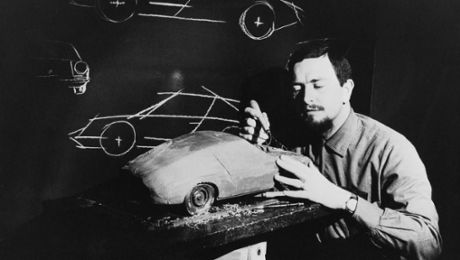With the 997, Porsche further sharpened the design of the 911. With its more steeply angled, round clear-glass headlights, the front end of the 911 had an even more dynamic and powerful appearance than before. The headlights once again referenced the air-cooled 911 models of old and clearly differentiated the car from the Boxster. As did the more muscular modelling of the rear, already featured in the Carrera, which created a significantly more masculine look. The S, GT and Turbo versions were 44 mm wider – rarely had a 911 sat so squarely on the road.
Model variants
Carrera, Targa, Cabriolet, Turbo, GTS, special editions and roadgoing versions of GT racing cars with GT2, GT2 RS, GT3 and GT3 RS – all this and the combination of rear-wheel drive or all-wheel drive options meant there were now 24 model variants (excluding special-order and special-edition models) based on the 997. Never before had the makers of the 911 focused so intensely on the individuality of its drivers. The sixth generation underlined this with noteworthy special models such as the 911 Sport Classic, 911 Speedster, 911 Black Edition or the 911 Turbo S Edition 918 Spyder.

